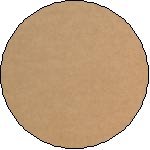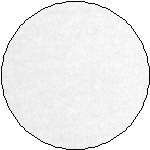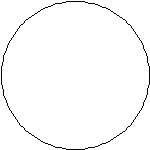Board Grades
Corrugated board is a paper-based construction material consisting of a fluted corrugated sheet and one or two flat linerboards. Corrugated board is manufactured on large high-precision machinery lines called Corrugators running at 150 lineal metres per minute or faster. The number of flutes per metre and the thickness of papers used, dictate the strength of the finished corrugated board.

Board Colours

Brown

Mottled.

White
Flute Profiles
The most common configurations of flute are as follows
E flute is approximately 2mm high, with between 290 -300 flutes per metre. This flute is designed to provide a high quality printing surface while offering a good puncture resistance.
B flute is approximately 3mm high, with between 150-185 flutes per metre. This is a very robust flute, offering compactness for minimising storage space. It provides a good printing surface.
C flute is approximately 4mm high, with between 120-145 flutes per metre. This is a larger flute than 'B' offering greater compression strength, but it may be crushed more easily.
BC flute is approximately 7mm high, a double wall configuration of corrugated board offering an amalgamation of the properties of 'B' and 'C, particularly useful where optimum performance is required. The 'B' flute is outer most protecting against impact and providing a better printing surface.
CA flute is approximately 9mm high, a double wall configuration of corrugated board offering an amalgamation of the properties of 'C' and 'A, particularly useful where optimum performance is required. The 'C' flute is outer most protecting against impact and providing a better printing surface.
EB flute is approximately 4.2mm high, a double wall configuration of corrugated board offering an amalgamation of the properties of 'E' and 'B', particularly useful where optimum performance is required. The 'E' flute is outer most protecting against impact and providing a high quality printing surface, which is essential for display packaging.
Board Weight
The paper used to manufacture corrugated board is discribed by its weight in grams per square metre (gsm). Typical standard weights of paper are 105, 125, 150, 200, 300, 350,400 and 440 gsm. The quality and strength of the paper is determined by its weight and also the content mix of new and recycled wood fiber.
Liner Materials
KRAFT LINERS
Kraft liner represents the top material grade in terms of physical properties used in the corrugated industry. In general these liners are made from softwood pulp although many sources of Kraft liner now also incorporate pulp from harder wood sources such as birch.(It should be noted that true hardwoods - such as Amazonian Teak or Mahogany are totally unsuitable for papermaking). Most sources of Kraft liner also incorporate recycled fibre in varying amounts, depending on the manufacturer.
Brown Kraft
This material is naturally brown in appearance and the shade varies depending on the location of the mill, the source of fibre and the pulping process.
White Top Kraft
White Top Krafts were developed to produce a good white appearance, with Kraft strength
characteristics, but at a lower cost than traditional Bleached Krafts.
(i ) White Top Kraft A top skin of Bleached Kraft fibres on a Brown Kraft fibre base.
(ii) Coated White Kraft A white coating, usually China Clay based, on a White Top Kraft or Bleached Kraft fibre base.
The whiteness and appearance of White Top liners will vary according to the thickness and profile of the outer skin.
White Mottled Kraft
White Mottled Krafts (sometimes known as 'Oyster') are produced by the same process as White Top liners with the skin of white being randomly distributed to give a mottled appearance.
Bleached Kraft
As its name implies, Bleached Kraft is produced by the same process as natural Kraft with the addition of a bleaching stage in the pulping process. This produces a material which is white in appearance but with some loss of strength against the unbleached Kraft. Bleached Krafts are less widely used nowadays with the development of White Top Krafts.
TEST LINERS
These liners are generally manufactured from recycled fibres as a sheet where the fibres are fundamentally the same throughout, although the surface may be dyed. These are known as Homogeneous/Simplex. or as a combination of two layer, where the outermost layer is of a better, selected, recycled fibre. These are known as Duplex/Multi-Ply. Test liners are usually categorised into three classes, these are as follows
TL1 (Test liner 1)
TL1 liners are rare and not extensively used in this country. They have an almost indistinguishable appearance from kraft and near comparable level of performance.
TL2 (Test liner 2)
TL2 liners are usually of similar appearance on the outer surface to kraft liners, and provide a good performance level approaching that of a kraft liner.
TL3 (Test liner 3)
TL3 liners vary more widely in appearance than the other two categories. The final colour of these liners is normally the result of the use of dyes, although there may be several visible 'waste spots'. These liners are generally used as the inside liner of the case where appearance is not critical.
White Top Test
White Top Tests are usually Duplex materials comprising a base layer of recycled fibre on which a layer of white fibre is laid. Some sources use recycled fibre in the white layer, others use Bleached Kraft fibre.
Coated White Top Tests have a China Clay based coating, are available to give the smoothest, whitest, surface for high quality printing.
As with White Top Krafts, the whiteness and appearance of white top liners will vary according to the thickness and profile of the outer skin.
White Mottled Test
White Mottled Tests are produced by the same process as White Top Test liners, with the skin of white being randomly distributed to give a mottled appearance.
CHIP LINER
Chip liners are manufactured from waste paper, and are normally only used as a centre liner for double wall board. Chip liners are usually dyed down, or left an undyed grey colour.

